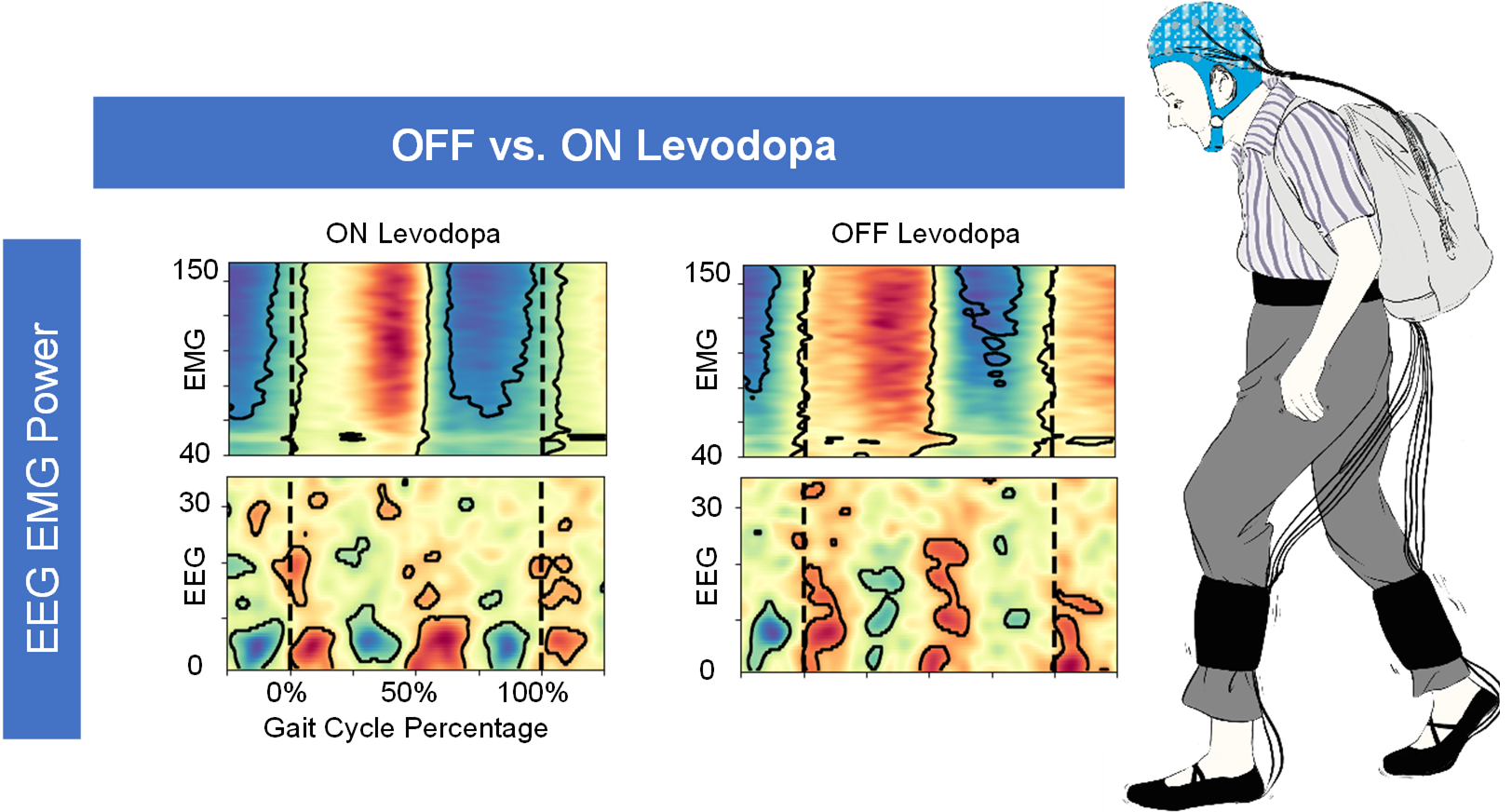Cortical and Corticomuscular Beta-Gamma Phase-Amplitude Coupling During Different Locomotion States and the Effects of Levodopa in Parkinson's Disease.
Parkinson’s can disrupt how the brain talks to muscles, especially during walking. We studied a brain-muscle signal called phase-amplitude coupling (PAC). Thirty people with Parkinson’s wore sensors on their scalp and leg while sitting, standing, and walking, both off and on medication. We found that PAC changes were linked to movement issues, which was improved with medication.
Background: Phase-amplitude coupling (PAC) in the beta-gamma range has emerged as a promising electrophysiological biomarker of Parkinson's disease (PD).
Objective: This study aims to investigate how levodopa and locomotion modulate cortical (central electroencephalogram [cEEG]) and corticomuscular (cEEG-gEMG [gastrocnemius electromyography]) beta-gamma PAC in patients with PD.
Methods: Thirty patients with PD underwent simultaneous cEEG and gEMG recordings during sitting, standing, and free walking in both off and on dopaminergic states. Spectral features and PAC analyses were conducted to assess the effects of levodopa, locomotion, and their associations with motor symptoms.
Results: In the off levodopa state, patients showed prolonged gait cycle intervals and shorter step lengths, correlating with higher Movement Disorder Society-revised Unified Parkinson's Disease Rating Scale Part III (UPDRS-III) scores. The cEEG beta-gamma PAC during sitting and standing, and cEEG-gEMG beta-gamma PAC during walking, positively correlated with UPDRS-III in the off levodopa state. The cEEG alpha/low beta-gamma and cEEG-gEMG low beta-gamma PAC increased from on to off levodopa while walking, with the latter correlating with reduced step length. Step event-related PAC analysis unveiled a dynamic enhancement of alpha/beta cEEG-gamma gEMG PAC around heel strikes in on levodopa compared with off.
Conclusions: Both cortical and corticomuscular beta-gamma PACs are modulated by levodopa and locomotion, with low beta-gamma corticomuscular PAC specifically linked to gait dysfunction. Moreover, the levodopa-related enhancement of alpha/beta-gamma PAC during heel strikes highlights the functional relevance of dopaminergic modulation during gait. These findings highlight the potential of PAC as a biomarker for PD, particularly in the development of gait phase-locked adaptive deep brain stimulation strategies for patients with PD guided by noninvasive PAC monitoring.

2025. Mov Disord (e-Pub ahead of print).
2024. J Neurol Neurosurg Psychiatry, 95(10):947-955.
2024. Neurobiol Dis, 197:106519.
2023. Brain, 146(12):5015-5030.